|
|
|
In the past year, I have spent a lot of time sorting through old photographs. First, my mother passed away in June of 2021. Along with my sister, husband, and two of my children we sorted through boxes of old photos searching for our favorites to create a tribute to our mother/grandmother. Then, after finishing the mammoth task of writing a book with my husband, I decided to begin tackling a project I have been procrastinating for years (if not decades) - scrapbooking all the loose photos from the pre-digital camera days. This includes all of the photos I inherited from my mother. As part of this process, I have also been removing photos from old magnetic albums and putting them in scrapbooks. Most recently, my stepfather passed away. Once again, my sister and I pulled out the big box of photos and started searching for our favorites of Dad. Throughout this ongoing process of photo sorting, I have been getting rid of pictures, but it wasn't until my sister and I were working on the big box that a sort of methodology formed in my brain. It quickly became apparent that some of the photos were not worth keeping, and I realized that we needed to agree on the criteria we would use for determining which photos to keep and which ones to toss out. Otherwise, we would constantly be asking one another "What about this one?" Fortunately, we had no trouble agreeing on the types of photos we were comfortable throwing away. Our categories were as follows: Poor Quality Images: The quality of a photograph can be affected by a number of factors to include lighting, focus, exposure, background/surroundings, and more. There is no reason to hold onto poor quality images. This is especially true in today's world when it's easy to delete a bad photo or retake an image, but even older photos are of no value if you cannot see the subject clearly. Unrecognizable Images: Images can be unrecognizable for a number of reasons. For one thing, poor quality images can render their subjects unrecognizable. In this case, however, I am mostly referring to subjects that you do not recognize. These could be people, animals, or places. My mom was an animal lover. She took almost as many photos of her various pets over the years as she did her children and grandchildren. In some cases, neither my sister nor I recognized a particular animal; thus, we felt no remorse in getting rid of its photos. With regard to people, we decided we didn't care to keep photos of friends of our parents from the 1960's whom we did not recognize or know. We did, however, hang onto old family photos (even if we couldn't identify all of the individuals in the picture) in the hopes that someone else in the extended family might be able to identify the unknown person or persons. We also tossed out pictures of places we've never been, didn't recognize, or couldn't remember. One of the problems that arises from shoving all your loose photos together in one big box is that they get mixed up. Some things, when taken out of context, become unrecognizable and lose all meaning. Lastly, we got rid of images of things we didn't recognize like a series of photos of an anniversary cake for someone named Bill and his wife (whose name was indecipherable in the images). We further tossed pictures of things we simply didn't care about. These included pictures of such things as a vase of flowers or Christmas decorations or a craft project. Multiple Images: One thing I have discovered as I have started scrapbooking is that I often have more photos of an event than I really want or need. Often there are several that are extremely close in terms of subject matter and detail, having been taken a few seconds apart. While this is sometimes desirable for documenting the progression of an event, it is often just redundant. In our case, we opted to choose our favorite images and get rid of the ones we didn't like as well. It's also true that back in the days of printing photos from negatives, people often chose to print duplicates with the intent of sharing. In some cases, we each opted to keep a copy of an image, but for the most part, one copy was enough. I mentioned that my mother loved photographing her animals. The result was an inordinate number of images of the same cat. It would seem that Scrappy the Calico was a particular favorite of Mom's as we have at least 50 photos of her lazing about when three to five especially cute images are more than enough to create a scrapbook page to remember her by. Other People's Images: My mother was a high school secretary for 23 years. Later, she worked in an elementary school cafeteria during her semi-retirement. As such, she had hordes of photos of other people's children - kids she worked with at the high school who gave her a wallet sized copy of their annual school photo or senior picture. These were nice for my mom when she was working, but had little, if any, meaning for my sister and I, so we got rid of most of them. The exceptions were extended family members and close friends of the family. While we all love getting pictures of our friends' family at Christmas time or other times of celebration, how much do we actually love going back and looking at those photos of our college roommate's kids twenty years later? In our case, the answer was not much, so we tossed a lot of photos of other people's families during our sorting process. Toss the Guilt Out with the Photo My mother seems to have been of the mindset "If you take a photo, you must keep the photo." I confess that even I have been guilty of this misconception, at least I was in high school. Thankfully, I am over it. Looking back, I have no trouble getting rid of images that no longer have any meaning. Indeed, some were not good images to begin with (for reasons identified above).
Having eliminated the excess photos from my mother's (and my own) photo collection, I know that looking through them in the future will be more enjoyable because all that remains are images that have meaning and are easy to interpret. No more asking "What's that?" or "Who's that?" or "Why do we have so many pictures of that cat?"
10 Comments
As an organizer, I'm a proponent of getting rid of stuff that no longer serves a meaningful purpose in your life. As someone who cares about the environment and believes firmly in the importance of recycling, I'm all about keeping recyclable and reusable items out of landfills. Thrift stores are a wonderful way of finding a new home for still useful stuff that you no longer love or need. Sometimes, however, in an effort to ease our consciences about getting rid of things, or simply out of convenience, we pass things on to thrift stores that they cannot use. Doing so increases their burden while decreasing their bottom line, or profit. Since most thrift stores are run by charities, that means less money is available to go toward the cause and more is being wasted on unnecessary expenses. Trash or Treasure: Determine Before You DonateRead/listen to this short blurb from NPR about the problem unusable donations pose for Goodwill Industries.
Guidelines for GivingPerhaps the best advice anyone can offer with regard to donating used items is to be considerate. Think of those who will be receiving and ask yourself whether or not you would want whatever it is you are offering. Also keep in mind the following: Trash is TrashFirst and foremost, avoid donating trash. That may sound obvious, but it does happen, on a regular basis. If you think an item is too gross to keep, don't donate it. Throw it away. Consumables that have been used should be considered trash. What do I mean by consumables? Anything that is meant to be used up or used and thrown away. Food obviously falls into this category, but I think everyone knows the thrift store is not the place for donating food items. Other examples of consumables thrift stores don't want include:
Evaluate an Item's DonatabilityMany of us understandably feel a pang of guilt when we throw away "a perfectly good item." I'll be the first to suggest that the landfill is the last place that many of these items belong, but it is inconsiderate of fellow patrons and burdensome to charities to give things no one wants or has a use for. When choosing what to donate and what to throw away, ask yourself if you would want someone to give the item to you. Consider the following when contemplating a donation:
What to do with the Un-donatableJust because your local thrift store can't or won't take a specific item, that does not automatically mean that item has to be sent to the dump. It's truly surprising and somewhat awe inspiring how many things can be recycled these days. Here you can find a list of over 200 items that can be recycled, plus a whole lot more information on disposing of specific items responsibly. In addition to recycling, there are many other options available for passing unneeded items on to others. Click on the topics below for specifics about donating or otherwise disposing of specific items.
I spoke to a worker at my local thrift store last year and was shocked to learn that here in my small town, they turn over about 10,000 items a week. That sounded astronomical to me, but I have since discovered with a little research that this is actually small potatoes for the thrift store industry. Many larger thrift stores deal with 3 to 5 times that volume in the same time frame.
We all want to feel like the items we're getting rid of are going to a good home, and donating to a thrift store is a good way to offer useful things to people who want and need them. That said, we do the thrift stores, many of which are charities or function in support of a charity, a disservice when we stick them with items they can't use. What you do with the items you declutter is as important as the decluttering process, especially since it is the part of the process that affects others. Please be a thoughtful and intentional giver and make sure the items you are donating are supporting your thrift store's mission and not adding to their burden. On more than one occasion, I have made the mistake of accepting jobs with clients who have been referred to me by family members. In one case, a woman hired me to work with her adult daughter, a single mother of four. On another occasion, a son and daughter-in-law (who lived out of state) asked me to work with his parents who were in their nineties. In both situations, there was a clear need for the assistance of a professional organizer, and I completed several sessions with good result, but the results were short-lived. I would return each week to find that little effort had been made in my absence to maintain what had been accomplished on my previous visit. Both cases ended with me contacting the referring family member to tell them I no longer felt comfortable taking their money. Why? Because both the adult daughter and the aging parents lacked the most essential requirement for successful, long-term decluttering: desire. While it was clear to me, and to their loved ones, that they could assuredly benefit from a decrease in clutter combined with an increase in organization, neither felt particularly compelled to embrace the process. In all honesty, I suspect that both felt a tad resentful at having their space invaded by a stranger in order to quell the unwelcome judgments of well-meaning (but meddlesmone) family members. I could have helped the elderly couple and the single mom. I could have made their lives easier and their spaces more comfortable. I could have saved them time, and money, and frustration. None of that mattered, though, because they didn't really want my help. They liked their spaces the way they were. They liked their stuff and didn't feel a need to part with anything. Because they had no desire to declutter, any efforts by outsiders to help them do so were destined for eventual, if not immediate, failure.
One person's clutter is another person's comfort. This being the case, it is impossible, not to mention inconsiderate, to inflict decluttering on another adult person. It won't work. The minute they are left to manage their space as they like, the clutter will return. They will, in all likelihood, seek it out in order to restore a sense of normalcy and ownership to their space. This reluctance (or downright refusal) on the part of family members to clear away the clutter can be frustrating to say the least, but think of it from their perspective. Would you want someone telling you what you should do with your things? Do you not consider yourself the authority on your stuff? What appears to be clutter to some seems entirely appropriate, and even desireable, to others. This point is reinforced to me a couple of times a year when we visit my father-in-law whose relationship with stuff is completely foreign to me.
My father-in-law loves stuff. Personally, I take Marie Kondo at her word. If an item - in and of itself - does not bring me joy, I find it a new home. For my father-in-law, simply obtaining things brings him joy, and having them fills him with comfort. The nature or quality of a particular thing has no real bearing on its ability to bring him satisfaction. It isn't the thing itself but the possesion of it that seems to bring him pleasure. He just loves aquiring and having things. Let me share an example (or two) to illustrate my point. On our most recent visit he couldn't wait to show me his latest acqisition. "Check out this desk I found on the side of the road. It was free." (It looked free.) It was obvious from the enthusiastic anticipation on his face that he was waiting for me to congratulate him on the procurement of this amazing find, but I couldn't. I just couldn't. Instead I said, "Do you need another desk?" knowing full well that he does not. He has seven desks. I counted them. "No," he smiled, unperturbed by the failed attempt at affirmation. "But it was free." This exchange is only too common between us. Ask me about the second sewing machine. - he does not know how to sew - or the bicycle he paid to have resurrected after stumbling across it at the dump (yes, the dump). He is 77 years old, and one has to traverse no less than a minimum of four miles of gravel roads in any given direction in order to get to his house. Members of our family (my husband and I included) have had flat tires on three occasions driving on those gravel roads. What on earth does he want with a junkyard bicycle? Dad likes to think that he will ride the bicycle or learn to use the sewing machine (both of which he has had without using for over a year now), but in all honesty, he isn't the least bit concerned about whether or not they actually earn their keep. He just likes having them.
As a person who loves order, I used to cringe a little encountering all the loose screws and empty plastic containers and other odds and ends my husband's father insists on keeping. I used to grumble to myself every time I opened the ridiculously heavy drawer in his kitchen where he keeps his 17 frying pans (two or three of which he actually uses). It used to bother me terribly thinking about the fact that some day my husband and his brother are going to have to deal with all that stuff.
How am I able to make those statements in the past tense? Because I've come to a realization. His stuff is his stuff. It's his life, and his house. He isn't a hoarder. His place, while not as orderly and neat as my own, is perfectly presentable. Most importantly, though, it brings him joy. It makes him happy to have his things about him, no matter how unnecessary and lacking in value some of those things may seem to others. While the professional in me wishes that all the world would embrace the wisdom of living a clutter-free life, the daughter in me has come to realize that it's just stuff, and for now it has a happy home with someone who values it. Possessions are highly personal in nature. There is no sense in trying to define the worth of someone else's belongings for them. For this reason, those of us who are inclined toward order must sometimes learn to be patient and accepting of those who happily inhabit the other end of the clutter spectrum. It has been six months since we moved into our new home. In that time, my husband has pointed out to me on three occasions a decluttering version of "I told you so". After discovering a use for something I chose to get rid of, he has essentially said, "This is why you don't get rid of things you might use." I adore my husband, but I respectfully disagree. In all three cases, I am content with my choice even though it meant replacing each of the items in question. Lest you think I'm a lunatic, I will endeavor to explain.
Ten years ago our youngest son did an experiment in bouyancy for his fifth grade science project. It required approximately 40 ping pong balls which we have retained in our possession ever since (until our recent move). We do not own a ping pong table or have access to one. At one point several years ago I made a vain attempt to repurpose the ping pong balls after seeing an idea on Pinterest. This involved writing tasks/activities on each ball. My son was not nearly as impressed with the idea as I was, and the ping pong balls soon found their way back to the garage. Thus, I felt completely justified in tossing them out when it came time to move. As luck would have it, mere weeks after discarding the ping pong balls, my husband was put in charge of securing supplies for a church youth activity. They planned to play a series of Minute to Win It games, one of which required...ping pong balls. Here's why I do not regret my decision to toss out those ping pong balls:
A couple of years ago we created a cement patio in our back yard. In preparation for the project, we pulled up eight square red brick pavers which have been sitting in our shop ever since. In preparation for the move, I offered them up on Facebook, and they were quickly claimed by a friend. She had the perfect spot for them. They actually solved a problem she'd been battling in her yard, and she was thrilled to get them. Several of the flower beds in our new house are filled with rock. One such bed is a narrow strip between the driveway and the front walk. A couple of weeks ago we decided to space flower pots in the rock to add some color and interest to the area. We decided it would be useful to put down pavers underneath the pots so they would sit flat. Again, my husband pointed out that we were buying something we had only recently given away, but I was completely comfortable defending that decision. Here's why:
We moved in December, and I honestly wasn't thinking much about spring and planting flowers. I was thinking about downsizing. In my zeal to lighten our load, I gave away six or eight mismatched plastic flower pots in varying sizes. All of them were sun faded and some of them were a little cracked around the rim. Now it's May, and I'm busily striving to beautify my new yard and increase my home's curb appeal (see the above entry for details). As we drove to Home Depot to shop for flower pots, my husband jokingly said, "It's too bad we didn't have a bunch of flower pots lying around that we could have used." Haha. I know. I know. Once again, I was unphased by the fact that we were replacing something we had recently owned and given away, and this is why:
Might is a word I hear often as an organizer. "I can't get rid of that because it might come in handy." Or "You never know when you might need a...." Other related words include ought, should, and could. All of these words convey a sense of uncertainty coupled with a vague notion of obligation. Most people, if questioned, would no doubt indicate an unwillingness to let fear serve as a primary motivator for their decisions and behavior. Yet many of us do just that when we succumb to the influence of 'might'. In essence, we let our belongings bully us. We keep things that serve no apparent or meaningful purpose in our lives - things we have no emotional attachment to or conceivable use for - simply because they might be needed. Instead of sacrificing precious space for things that may or may not prove useful at some future date, why not make space for the things you have a use for and interest in right now?
A client recently complained to me that "organizers always say that holding onto things you might need is pointless because you never use them." I admit, I'm guilty as charged. This person went on to express her amazement at how many times she has been saved at the last minute because she held onto something she needed. This well-meaning individual failed to see the flaw in her reasoning, which is this: there is a difference between an actual need/use and a hypothetical one. In her case, she was actually using the things she had chosen to keep. The problem arises when we aren't sure when or if an item will prove useful. If you can visualize a legitimate use for something, by all means, hold onto that item. If, however, you only have an ambiguous notion that it could serve some purpose someday - but no real notion of what that purpose could be - please consider getting rid of the item.
When trying to determine which of your 'mights' are legitimate and which are simply nebulous, I recommend doing a cost comparison. There are many different costs associated with keeping vs. replacing an item. Consider the following:
When it comes down to it, there are a couple of questions we should ask ourselves when considering whether or not to keep the 'mights' in our lives:
There is no wrong answer to these questions. Only you can decide what a particular thing is worth to you, but I encourage you to take the time to think it through. If you decide you value other intangibles over the item, you can feel confident letting it go, even if a use actually does arise in the future. I hope that I have demonstrated through my personal experiences that discovering you could have used something you got rid of doesn't have to be devastating. In fact, it can be validating. In each of the cases I shared, I discovered that what I had wasn't really what I wanted. While the items in question could have been used to satisfy my purposes, I would not have been as happy with the results.
My husband writes books, and I edit them. Editing can be a tedious task. It takes time and concentration to make a careful, deliberate review of the material. When I edit my husband's writing, I am looking for typos and grammatical errors (copy editing), but I am also evaluating the effectiveness of his argument and the fluidity of the text (content editing). I'm not just interested in whether his work is written properly; I'm interested in whether it is written well. I want it to be a true and compelling representation of his thoughts and ideas. It occurred to me recently that decluttering and downsizing are kind of like editing. In fact, the word edit can mean to expunge or eliminate [the unnecessary]. While this definition is highly appropriate to a discussion about removing clutter, I also like applying the more common (grammatical) definition of edit, which is to revise or correct. When we downsize and declutter, our goal shouldn't be limited to removing the excess, but also to setting things right in our environment (i.e. revising and correcting). To me, the ideal space is one that is a true reflection of its owner. Clutter has a way of crowding in and making itself at home, obsuring the purpose and personality of a space in the process. Editing a space allows us to revise its form and function so that it becomes a proper depiction of who we are, what we value, the road we've traveled, and how we like to live. When editing your own or someone else's writing, there are certain things you look for and eliminate in order to make the work the best it can be. The same is true for editing your space.
Mistakes in spelling, sentence structure, subject-verb agreement, and other common grammatical errors are the most obvious to search for and often the easiest to spot when editing a piece of writing. The same is true for mistakes in stuff. In this category I would include anything you purchased, or received as a gift or hand-me-down, which you do not like, need, or use. They are the things people hang onto out of a sense of guilt or obligation, and they could be almost anything. Examples include:
We all make mistakes in stuff on a regular basis. These mistakes help us to refine our tastes. In this way, they are not a waste, and we can feel good about letting them go and moving on with our lives.
To be inconsistent is to lack harmony or agreement, to be at variance. In wiriting, inconsistencies are those sentences or ideas that don't seem to have a place in the overall work. They may be related, but not closely enough to blend well with the rest of the text. They leave the reader wondering, "What's that got to do with anything?" Inconsistencies in our personal possessions are similar in that they do not seem to belong. They seem incongruent. They may be items we have purchased ourselves, or they may be things that we were gifted in one form or another. If you've ever looked at a thing and thought, "This really isn't me," you've encountered an inconsistency in your possessions. Chances are, if you don't like a thing it's because it doesn't speak to you; it's not in harmony with your interests or tastes or conceptions. If that is the case, you can feel comfortable parting with whatever it may be, even if it was given to you by someone else. You need feel no obligation to keep things other people think you might (or even should) like or use. Only keep those things that represent a true reflection of you.
It can be tempting as a writer to restate a concept in a slightly different way for added emphasis, but this practice can grate on readers if it seems as though the author is just repeating himself. While we may not enjoy redundancy as readers, many of us practice it openly with regard to our possessions. Redundancy occurs anytime we have multiples of an item when one or two would do nicely. It is good to have multiples of some things. Obvious examples are bath towels, underwear, dinner plates, and cutlery, to name just a few. In many cases, though, redundancy (or multiples) only increase the clutter in a home without being truly useful. A good way to determine whether or not a particular item is a good candidate for maintaining multiples is to ask yourself:
If your answer is no, you don't use them all because, yes, you do have a favorite, you can feel comfortable getting rid of the extras. They are not serving a purpose; they are just taking up space.
In addition to writing books, my husband teaches history. While grading papers recently, he came across a student whose work was rife with unreasonably lengthy sentences - 100 words or more. For a reader, such lengthy statements are difficult to digest. One gets lost in the middle and forgets what the point of the sentence was or how it ties to other ideas being expressed. The same can be true of possessions, particularly collections. Too much of a good thing is not a good thing. It's tempting when you begin collecting to snatch up any item you encounter that fits your collection. In addition, friends and family often add to collections at gift-giving occasions because it's easy to buy for someone if you know they love ceramic chickens or sports memorabilia or all things Star Wars. As with multiples in other forms (as mentioned in the previous section), some specimens are better than others, and the collector will undoubtedly have favorites. Editing a collection can actually add to its charm and visual impact. A few good pieces will stand out and draw people's attention like a true focal point. On the other hand, a dizzying array of related pieces often reads as clutter to the mind. Nothing stands out and demands to be noticed because everything gets lost in the jumble.
As a military historian, my husband has written on a number of topics (such as the Iraq War, the rise of ISIS, and the War in Afghanistan) which are ongoing in nature. Because these topics are continually evolving, part of the editing process involves making sure that the information included in the book is the most up-t0-date information available at the time of publication. When it comes to our homes, we often don't have to look far to find items which are either outdated or incomplete. Outdated items could include electronics, clothing, media, books, reference materials, software, or calendars and planners, to name a few. They may have gone out of style, been surpassed by newer technology, or contain information that is no longer accurate. As for incomplete items, this would include anything that is missing parts or pieces. For some inexplicable reason, we (including me!) have a tendency to hold onto such things, even though they no longer work properly. Be they puzzles or appliances, they do not deserve a place in your space if they do not work as intended. Both of these types of items are simple to edit as they often have no sentimental or inherent value. Chances are you know exactly where they are located, so finding them and getting rid of them should be easy work. As an editor and an organizer, I hope you will apply these suggestions for editing your space. Doing so serves much the same purpose as editing a written product; it makes the space better, more enjoyable to experience, easier to work with (or within), and nicer to share with others.
Have you ever set a timer for one minute and then waited? A minute is a long time when you are just sitting and watching the seconds tick by. Or maybe, like me, you sometimes race the microwave timer to see how much you can get done before whatever's in the microwave is finished. If you've done this, then you know you can accomplish a surprising amount in just a minute or two. With that in mind, think how much you could achieve in ten minutes! A common reason for procrastinating organization tasks is the notion that "I don't have time". In reality, there are many simple organizing tasks that can be completed in 10 minutes or less. What's more, many of these tasks, if done regularly, can make life easier by helping us to stay ahead of the game and maintain a basic level of organization. The next time you have a few unclaimed minutes, try accomplishing one of these 10-minute organizing tasks. Some need to be done at home, but several of them can be achieved while waiting for a doctor's appointment, or for soccer practice to end, or anywhere you may find yourself waiting.
Meal Planning for the week only takes a few minutes, and it is time well spent. Not only is it a great way to save time and money, it is also an excellent way to ensure your family eats healthier.
Ten-minutes is generally plenty of time to do any of the following:
If done every day or two, it only takes a few minutes to sort through the mail, recylce or shred the unwanted items, file what needs to be filed, and set aside or act on those things that require attention. The same can be true for other piles of paper that may have begun to accumulate around the house.
If you're talking on the phone or waiting for a pot to boil, take a few minutes to clean out your purse, work bag, or child's backpack. It's quick and easy, and it feels like an accomplishment. As a bonus, doing this task regularly can prevent forgetting or missing something important.
Stuff piles up quickly on desktops. The presence of clutter, especially on a work surface, can impact a person's productivity, creativity, and ability to focus. Clearing away the clutter will leave you feeling refreshed and make it easier to concentrate.
Countertops are clutter magnets, so taking a few minutes every couple of days to clear away whatever has collected is a good way to keep things from getting out of control. Clutter-free countertops set a tone for the space. Maintain a feeling of order by keeping your counters free and clear.
Even fairly messy rooms can be tidied or reset in a matter of minutes, provided everything has a place. A tidy space speaks to our subconscious in much the same way as a cluttered space. The difference is, instead of leaving us feeling frustrated, overwhelmed, and unsuccessful, a tidy space engenders feelings of control, accomplishment, and calm.
Got ten minutes? Why not clear the junk mail from your inbox? While you're at it, unsubscribe to newsletters and emails that no longer interest you, delete unneccessary or outdated emails, and organize the rest.
This is something I rarely think to do, but it only takes a few minutes. Use the time to merge duplicates (am I the only one who has these?) and delete contacts you no longer need. While you're at it, why not clean out your voicemail inbox as well?
If you're like me, you save websites and then forget about them. Before long, your favorites folder can become a cluttered mess of disorganized information. Take a few minutes to delete bookmarks for sites that no longer interest you and organize the rest.
Here's another simple task that has the power to lift your spirits. Go through the glove compartment, the center console, and any other cubbies where you may have things stashed. Toss out any trash, and if time allows, give the whole interior a good wipe down. If you're really feeling ambitious, vacuum it all out. Of course, that will take a little longer, but not much if you're using an industrial strength vacuum. My husband surprised me awhile back by picking me up from the airport in a newly cleaned out car. I noticed it immediately and every time I got in the car for the next couple of months until winter arrived with its dirty melted snow and salt encrusted roads and ruined everything...
This is yet another task that can leave you feeling a little better about life. In mere minutes you can empty out sketchy leftovers, remove expired items, wipe down shelves, and arrange the remaining contents of your refrigerator in an orderly fashion. Once you've done so, opening the door will give you a little sense of accomplishment as you are confronted with the neatly arrayed shelves.
The next time you're waiting on hold, take a few minutes to sift through your pantry or food cupboard in search of expired food. While you're at it, combine open containers of the same product. Wherever it makes sense, remove unnecessary packaging to save space.
The junk drawer is always a good place to start if you want to complete a quick household organizing task. Other prime candidates are desk drawers and night stand drawers, but any drawer will do. Who knows, you might even have time for two!
Spruce up your entry by organizing your coat closet, hall tree, or other entry storage space. Because these spaces are the first ones we come across as we enter our homes, it's easy for them to become dumping grounds for whatever we're carrying with us. A few minutes once every couple of weeks will go a long way toward keeping this area clutter free, which is a desirable thing since it's also the first thing visitors see when they come to call.
Write down all the little tasks and ideas that are floating around in your head, and organize your notes. You can also brainstorm a topic such as vacation ideas or blog post ideas or anything else that interests you. If something is troubling you, write out your concerns. If you have a decision to make, create a list of pros and cons. Writing things down is a great way to relieve both mental and emotional stress. If you're eager to introduce a little more organization into your life, try starting with some 10-minute organizing tasks. They offer a quick and effective way to make meaningful progress toward the ultimate goal of becoming a more organized person. Many of them are easy to do while you're doing something else, like waiting for an appointment, waiting on hold or even talking on the phone. What's more, they leave you with an uplifting sense of accomplishment. What can you do in 10 minutes?
AFFILIATE DISCLOSURE: This post contains affiliate links. This just means that there are product suggestions included within the text. Should you click on one of the links and decide to make a purchase, I will receive a small commission. I only suggest products I love and have experience with that are directly related to the content in this post. You can view my Disclosure Statement for more information. Thank you for your support! When you hear the word clutter, what comes to mind? If you're like most people, physical clutter is the thing you think of first. It may even be the only thing. In truth, though, clutter can take many forms. Kerri L. Richardson, professional organizer and author of the book What Your Clutter Is Trying To Tell You, defines clutter as follows: When thought of in this way, many other types of clutter become evident. The first step to decluttering is to uncover your clutter. In other words, to truly conquer your clutter, you have to identify it in all its forms in order to root it out and remove it from your life.
Not all clutter is visible. While visible clutter (which I will refer to as physical clutter) is the most obvious, it may not be the most limiting or the most impactful form of clutter in a person's life. Clutter can be mental, emotional, or spiritual as well. While generally unseen, these types of clutter (sometimes referred to as "baggage") can have a radical impact on quality of life and overall well-being.
The clutter that is conscious is the clutter that you recognize and acknowledge. When you encounter conscious clutter, it elicits a reaction. The reaction can be both intellectual and physical in nature. For example, seeing a cluttered countertop might cause your muscles to tense or your heartrate to increase. It might also conjur negative thoughts and emotions. While most conscious clutter is physical, not all physical clutter is conscious. It's possible for a person to become so used to physical clutter that he or she develops a sort of clutter blindness. Unconcious clutter can also evoke physical and emotional signs of stress. The difference lies in the fact that unconcious clutter is not recognized as clutter. It can be anything in your life that is getting in your way, preventing your progress, or impacting your peace and happiness. This description of clutter by inspirational writer Eleanor Brownn perfectly describes what I am referring to as unconscious clutter.
Now that we have expanded our understanding of clutter, let's take a closer look at the different kinds of clutter.
Physical clutter is stuff. It takes up space in the physical world. When searching for a definition of clutter, you will find that it is often associated with disorder, confusion, and excess. Physical clutter refers to those items that are unused, unneeded, and/or unwanted but held onto for one reason or another. It can also refer to items that are out of place or have no permanent home. It's interesting to note that the reasons behind the accumulation and retention of physical clutter could be considered a form of clutter in and of themselves. I'm thinking here of the guilt or fear that often cause us to hold onto things that really don't have a place in our lives. Clearing Away Physical Clutter: This website is dedicated largely to the concept of dealing with physical clutter, so I won't go into tremendous depth here. Instead, I will just offer a few simple suggestions for getting started.
Mental clutter accumulates when we have too much to do or to think about. As a result, our brains become overloaded making it difficult to focus, problem solve, and be productive. This leads to stress, anxiety, and frustration. If you are like me, you probably find yourself thinking most clearly during down times such as while driving, taking a shower, exercising, or laying in bed first thing in the morning. This is because these simple, semi-automatic activities require very little 'brain power', thus allowing our minds to focus in on a particular problem that's been troubling us or to suddenly wow us with a flash of brilliance or creative genius. The problem is, capturing these light bulb moments can be tricky when one is in the middle of traffic or dripping wet. The good news is, there are things we can do to recreate the circumstances that foster mental clarity. Clearing Away Mental Clutter:
Emotional clutter comes as a result of negative thoughts and feelings that weigh us down and limit our progress. Guilt, fear, anger, resentment, self-doubt, jealousy, anxiety, and grief are some of the biggest culprits. Despite their damning effect on us (or perhaps because of it), we often cling to these emotions, and the sources from which they spring, with self-destructive determination. What are the sources of emotional clutter? Some examples include:
The key to overcoming emotional clutter is to develop emotional resilience, or the ability to adjust or recover when faced with change, setbacks, disappointments, and other challenges that life presents. Clearing Away Emotional Clutter:
Integrity is often associated with honesty. That is certainly an important aspect of integrity, but there is more to this concept than mere veracity. Integrity also means whole, sound, undiminished, unimpaired. When applied to one's character, I think a good way to define integrity is living in such a way that your actions are consistent with your beliefs. In other words, integrity is being true to yourself. When we make choices that we know are not an accurate reflection of how we believe we should live our lives, our integrity is weakened. Much like a building that is structurally unsound, poor choices can leave us feeling unbalanced, out of alignment, and just off. It could be as serious as committing a crime or breaking a vow or as simple as being unkind or eating something that's bad for you. It all depends on what matters to you and the person you want to be. Whatever the case, the more we live out of sync with the things we believe to be right, the more spiritual clutter amasses in our lives. Clearing Away Spiritual Clutter:
Clutter can be overwhelming. When it comes to physical clutter, clients often tell me, "I don't know where to start." The same can be true for all forms of clutter, be it mental, emotional, or spiritual. My response to this statement is always the same, and it holds true no matter what type of clutter you are dealing with. It doesn't matter where you start. Just start, and in doing so, you will build confidence and momentum that will carry you through to the end. I wish you every success in uncovering and conquering your clutter. It is worth the effort. You can do it. I believe in you. If you're feeling nervous about uncovering your clutter, contact me. The process is always easier when you have support.
Recently, as I have begun to work virtually with clients, I have encouraged them to keep a downsizing journal.
A downsizing journal is exactly what it sounds like: a journal dedicated to the process of downsizing. Downsizing is a major undertaking that involves a great deal of physical, mental, and emotional effort. At times, it can be overwhelming, frustrating, and/or exhausting. Staying on track and maintaining your motivation for such an undertaking can be challenging. Writing about the experience can help you appreciate your purpose, examine your feelings, vent your frustrations, and record your progress.
You can obviously include anything you like in your downsizing journal. That's the beauty of journals; they're personal. That said, I do have a few recommendations for how to utilize a downsizing journal effectively. Consider including the following: Define Your "Why" Your "why" is your purpose for downsizing. I enthusiastically encourage you to start your journal off by creating your persoanl list of reasons for embarking on the downsizing journey. Take your time producing this list. Ponder. Ask yourself questions such as:
Record your answers. You can create a simple bullet list or write detailed paragraphs explaining each of your reasons. However you choose to record the information, it's important that you look at it frequently throughout the process. Use it as a reminder of why you started the downsizing process and a source of motivation to keep you focused and moving forward. Describe Your End State Your end state is closely related to your "why" but different enough to merit a page or two of its own. Your end state is what allows you both to visualize and to recognize success. How will you know when you have successfully downsized if you don't have a picture in your mind of what that will look like? Again, it's helpful to ask yourself a few questions and record your answers. Some questions to ponder include:
Again, it's important to revisit your answers periodically in order to evaluate your progress and be reminded of what you are working toward. Outline an Action Plan If you are working with a professional organizer, he/she can assist you in creating an overarching plan for achieving your downsizing goals. Downsizing is a comprehensive process that typically involves editing all of your possessions, at least to a certain degree. As such, it is best to break it down. I recommend taking one of the following approaches:
Creating a detailed plan for downsizing will take some time and thought, but it will make the actual process much simpler because you will know when you have met your goal. Decision making will be less stressful if you have a clear set of guidelines in place to help you determine what you want/need to keep. Record Your Progress A journal is a great place to insert before and after photographs to document your progress. You might also use your journal to make to do lists. Personally I find crossing items off a list extremely satisfying. You can also just write about your progress in typical journal format by describing what you accomplish each day or week. Vent Your Frustrations As with any major undertaking you will encounter challenges throughout the downsizing process. Things will not always go according to plan. Venting your frustrations on paper can be wonderfully theraputic. It's a way of purging your soul while purging your belongings! Work Through the Decision Making Process If you're having trouble determining what to part with or struggling to let go of things, write about it. Make a list of pros and cons for keeping or getting rid of a particular item that's causing your stress. Seeing it all laid out in black and white often yields an obvious solution. Record Your Feelings When you're feeling overwhelmed by the sheer scope and scale of the process, write it out. When you're feeling proud of what you've accomplished, record those emotions. Writing down your feelings can be an effective way of processing them. The simple act of writing it down can help you to make sense of what you're feeling and deal productively with those emotions. Write About Your Stuff Do you have fond memories of a particular item? Whether or not you are keeping the item in question, I recommend writing about it. Describe the circumstances that led you to acquire the item, who gave it to you, what you love about it, why it has value to you, and where it came from. You might even experiment with writing to the item itself. Pretend you are transcribing a letter to the beloved item. Reminisce about how you "met", who "introduced you", what kinds of experiences you enjoyed together, and so forth. Be sure to include a photograph of the item as well. Keep Track of Things We downsized as part of a recent move. For us the process involved giving away many items to friends and family, donating items to charity, and selling some items. Because I was giving away a lot of things to a lot of different people, I kept an ever-evolving list of the items I had offered up, who had claimed them, and when/where the items would be handed off to their new owners. A downsizing journal is the perfect place to keep track of such information. If you're selling a lot of things, you can also use your journal to list each item, your asking price, your rock-bottom price, and other pertinent information.
If you are embarking on the downsizing journey, I hope you will consider keeping a downsizing journal. Doing so can help you manage, process, record, and preserve the process. Your downsizing journal can be private, or you can share it with a family member or trusted friend. If you are working with an organizer, I recommend you share portions of your journal with him/her as you deem appropriate.
Downsizing has been on my mind lately. My husband and I recently downsized extensively as part of a move, I'm working with a couple of clients right now on major downsizing projects, and this past week I helped my mom downsize as she moved to a significantly smaller space. On top of that, my daughter and her family are currently downsizing to a much smaller home as part of a temporary relocation. As a result, I've put a lot of thought into the process of downsizing, how it differs from simple decluttering, and how the two processes are related. While it is impossible to downsize without decluttering, and decluttering certainly reduces the amount of stuff in a space (i.e. downsizing), in my mind there is a discernible, though perhaps subtle, distinction between the two processes. Meriam Webster defines the word declutter as follows: (verb) to remove clutter from a room, an area, etc. You will not be surprised to learn that, as an organizer, I have a fondness for decluttering. Indeed, for me it is a mindset, a way of life. I keep a bag, box, or bin for collecting items I wish to get rid of perched in a designated spot in my garage, and I regularly make trips to the thrift store to make donations. It wasn't, however, until this last move that I felt like I could say I had legitimately downsized my belongings. So what's the difference? The definition of downsize is: (verb) to reduce in size. How is this different from decluttering? The distinction, in my mind, between downsizing and decluttering centers on two factors:
Scope Let's start with scope, or extent. One can declutter, or reduce the clutter, of a surface, a drawer, a closet, a room, or an entire house. On the other hand, downsizing refers to the comprehensive reduction of one's possessions. Thus, the scope is broad and all-inclusive. When you legitimately downsize, it is with the intent of living a simpler life, one that reduces your overall footprint and requires less space. Scale Since decluttering simply involves the reduction of clutter, it can be performed on a small scale - such as thinning out a collection or getting rid of items that are no longer functional. If we wanted to get technical, getting rid of just one unwanted or unneeded item could be considered decluttering. Downsizing, on the other hand, requires a tangible change in the amount of stuff you own. When you downsize, you minimize all of your belongings typically with the intent of reducing the size of your living space. Because the scope and scale of downsizing are much broader than is generally the case with decluttering, the process can be a bit overwhelming, and it can be difficult to know where to start. Since I've had to really think this through lately, I've come up with some suggestions for how to approach the downsizing process. Define and Embrace Your LifestyleOften downsizing is motivated by a lifestyle change. It may be one that you have sought out, as was the case for us, or it may be one that is thrust upon you. Whatever the case, the first thing to do when you are faced with downsizing is to examine your situation. For example:
Thinking about potential changes to your lifestyle that may come about as a result of downsizing will help you come to terms with the process and even look forward to living with less. Instead of feeling like a burden, you can start to embrace downsizing as a means of reducing the burden of unwanted, unneeded, unused stuff. Start with the Easy StuffWhen faced with a major undertaking such as downsizing, I recommend starting with the simple stuff and working up to more challenging tasks. What is the simple stuff? In this case, I am referring to those things that are the least stressful to part with - things that have no sentimental or inherent value. Here are a few examples:
Purge Your PaperworkOne unused, often unneeded, item that people frequently hang onto is paperwork. If you are downsizing, now is the perfect time to get rid of all that excess paper. For tips on how to Declutter Papers and Files check out the Information Management section on this website. Let Your Space Be Your GuideIf you are downsizing but staying in the same place, consider how you would like your space to look and feel. If you are downsizing to a smaller space, examine the new space carefully. Take photos and measurements. Only keep those things that will fit the constraints of your space, whether literal, physical constraints, or intentional, functional constraints you have choosen to apply. Only keep the clothes that will fit comfortably within your closet and/or dresser. Only keep the books that will fit on the shelves you have for which you have space...and so forth. Practice ExclusivityThink of your space as an exclusive club - only the best of the best are allowed admission. Choose your favorites, and part with the things that are just so-so. Choose your favorite furniture, your favorite decor items, your favorite wall-hangings/photos/artwork, your favorite kitchen utensils, your favorite clothes. Imagine a space where all the things that surround you are things that you love. This quote from William Morris has always inspired me in this regard: Search for Versatile SolutionsAs you sort through your possessions for those worthy of keeping, look for items that can serve more than one function. Furniture pieces are a great example. Do you have an item that offers both seating and storage? Or a work surface as well as storage? Be RealisticIf your space is decreasing, it is important to choose items that are correctly proportioned. A queen size bed is obviously a better option for a small bedroom than a king size bed. Choose furniture with slim lines such as narrow side tables, a sleek sofa, a petite table, etc. Avoid overstuffed, bulky furniture. Consider how you will use the space as well. Do you need a separate desk, or can you function comfortably with a folding or portable desk? Or could your dining room table double as a work space? Living with LessIf your downsizing efforts are brought about by necessity, and not by choice, you may be feeling frustrated, overwhelmed, or depressed. It's normal to feel that way in such circumstances. Just know that, while changes is almost always challenging, it also brings opportunities for growth and opens the door for new experiences. Look for the positives that will result from this change of lifestyle. There will be many.
Do you have boxes of old memorabia, awards, kids' artwork, souvenirs, and other odds and ends that you haven't looked at in years? What causes you hold onto these things? One distinct possibility is a sense of obligation. You may be thinking something like:
Or some similar form of self-imposed censure or guilt... The thing is, if the items were truly important to you, they wouldn't be boxed up in the attic or basement or closet. They would be on display or in use because that is what we do with the things that we love. Chances are, you've forgotten about many of the things that lay buried in the bottoms of boxes and stashed in the darkest recesses of your home's storage spaces. While you may enjoy a brief moment of reminiscence upon being reunited with these items, you are not likely to miss them should they cease to inhabit a place in your plane of existence. Still, getting rid of the guilt that keeps you from getting rid of the things you feel duty bound to keep is often harder than getting rid of the items themselves. The good news is there is a way to preserve the memories and relationships and history associated with things without keeping the actual objects. The solution is photographs combined with scrapbooking or journaling. They say a picture is worth a thousand words, but taking the time to add a little information to accompany your photos will only add to the value of the image. Implementing the Photographic Method of DeclutteringSome things are better suited to the photographic method of decluttering than others. You aren't likely, for instance, to feel the need to photograph kitchen utensils or other tools that you no longer use in order to preserve a memory of them. Indeed, you are also not likely to feel duty bound to keep such items. The kinds of things that can be well-preserved with a photograph are the kinds of things we hold onto for sentimental reasons - they remind us of someone or something that we value. Let's look at a few examples and how to use photographs and journaling to let things go. Kids' Artwork Kids tend to be prolific artists. While some of their work is truly memorable and worthy of preservation in its original form, the sheer volume makes it difficult to justify keeping all your child's artwork. Instead of storing boxes of underappreciated art, photograph or scan your kid's creations. You can then use the photos to create other things like calendars, stationery, notecards, coffee mugs, coasters, and more. Consider taking a photo of your child with his or her creation, or if they are making it at home, photograph them in the process of creating. You can also take a video of them working on their masterpiece and ask them to describe it to you. Certificates A cheap and simple way to recognize or thank someone within an organization is to give them a certificate. The important thing to keep in mind when sorting through piles of certificates is that the real value is in the gesture, not the piece of paper itself. Some certificates are worth keeping, others can be disposed of down the road. Only you can determine which is which as it is a personal decision. One nice thing about certificates is that they fit nicely into page protectors which can then be inserted into scrapbooks. Whether you decide to photograph a certificate or keep the original, I recommend writing down the circumstances under which it was received. While the who, what, and when may be included on the certificate, a brief explanation of the larger context can add meaning, particularly for children and grandchildren when the time comes for them to sort through your things. Trophies and Awards My husband served for more than 28 years in the United States Army. In the military awards are often given at the end of each assignment and are often accompanied with a gift (usually a wall hanging of some sort). For part of my husband's military career, he worked extensively with foreign militaries who also felt the need to provide him with gifts, often just for visiting their unit or for some other brief interaction. For many years, we kept the vast majority of these items in boxes. When we bought our first home near the end of his career, we decided to create what my husband calls an "I love me wall" to display all the things he had accumulated over the years. We chose a stairwell and used it to create a collage wall (walls, really). Then we moved, and there was no such space in our new home, so we decided it was time to be discerning about what we kept. Certificates were removed from their frames and placed in page protectors as described in the previous section. Some items were tossed out. Others were photographed, and a select few made it onto a new display wall in the basement. Of the items we opted to photograph, the following information was included:
Similar efforts could be made to preserve children's sports trophies and other common awards. Take a photo of the child with their trophy (preferably in their uniform, and ideally with their coach). Then write down the key information.: the name of the league they played in, the time frame, the coach's name, their win-loss record, what position the child played, his or her stats for the season, and any other relevant information that you or your child might like to recall at some later date. Souvenirs Souvenirs can take many forms from a pamphlet or ticket stub to a cheap trinket to an expensive artifact. We often hang onto all of them, no matter their value. Paper souvenirs can easily be placed in a scrapbook along with photos of the event or vacation with which they are associated. Other bulkier items require some consideration. Often in the midst of a vacation, a cheap knick knack may catch our attention. Once home, these inexpensive remembrances frequently end up in a box of "keepsakes'. That's fine if you have endless space to store stuff you rarely (if ever) look at. If not, consider photographing the less-than-display-worthy items and then getting rid of the objects themselves. Once again, it is recommended that you record any relevant information about the event or vacation to accompany the photograph. Where is it from? When were you there? What was it about the object that initially appealed to you? I've just listed a few of the general kinds of items you might consider photographing as a means of decluttering. Now that you have a feel for this approach, consider applying the photographic method of decluttering as a means of downsizing any memorabilia or other knick knacks you may have stashed away in boxes somewhere. It's simple. Take a picture and toss the item. Be sure to document the item's significance in writing. Then reclaim the storage space those items have been hoarding. You may find that you actually get more enjoyment out of looking at the photos than you ever did having the items stashed away in boxes out of sight.
|
Archives
November 2022
Categories
All
|
Proudly powered by Weebly
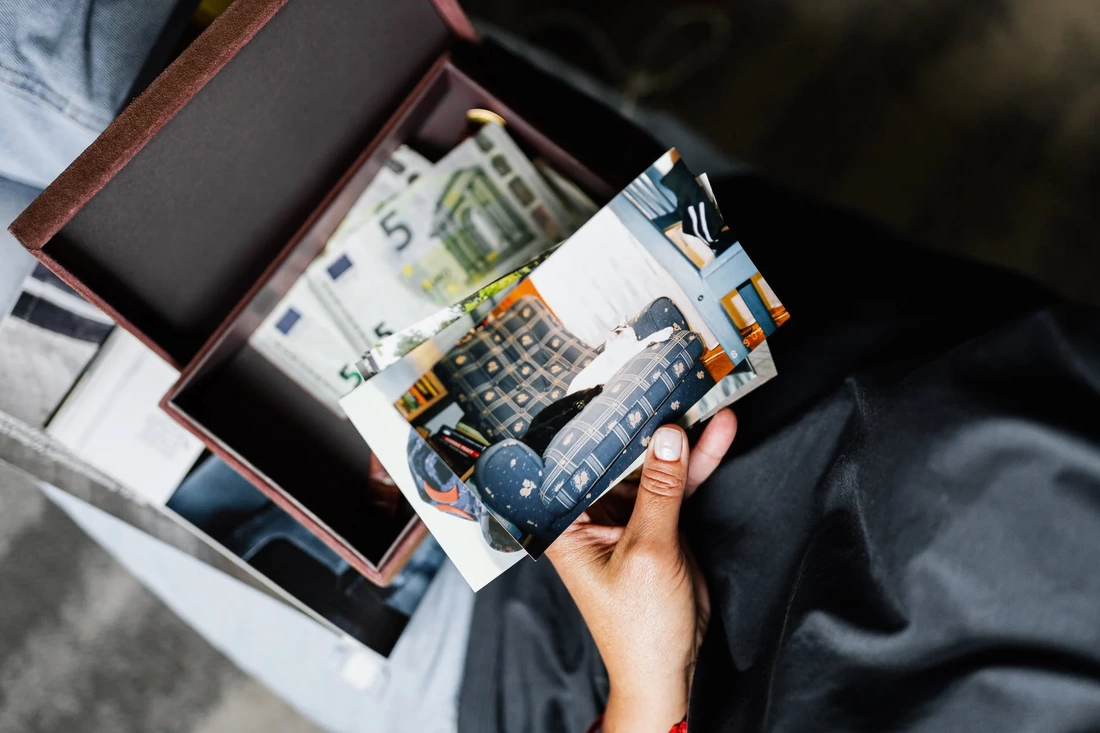
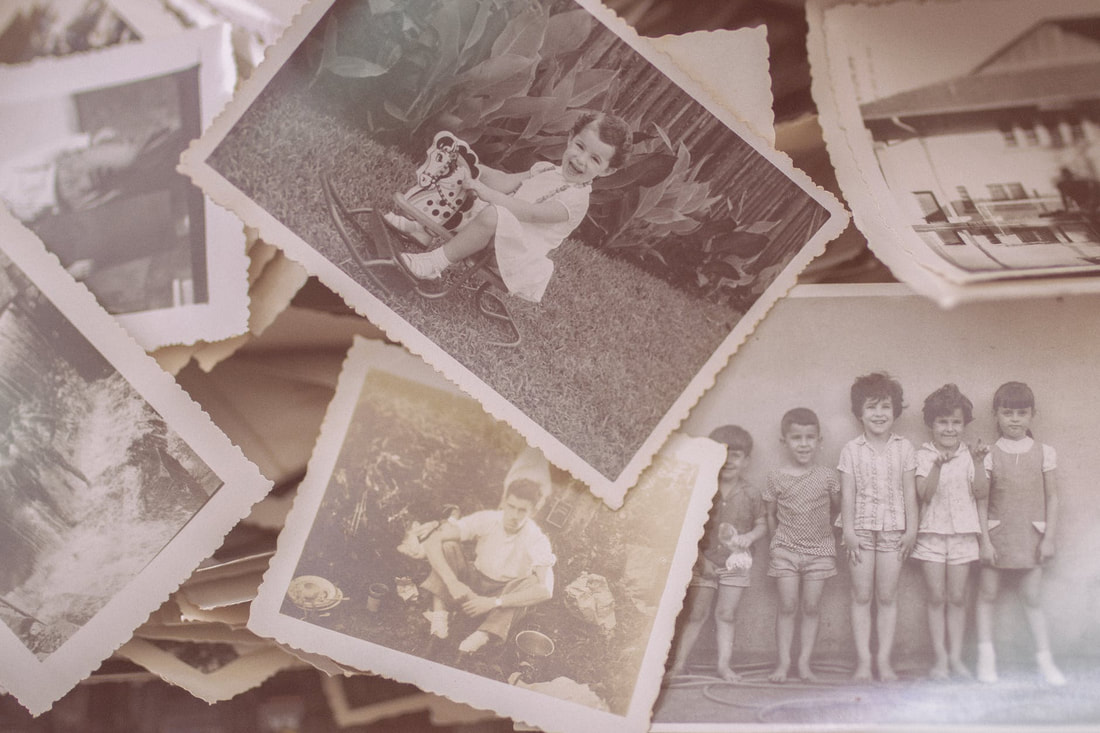


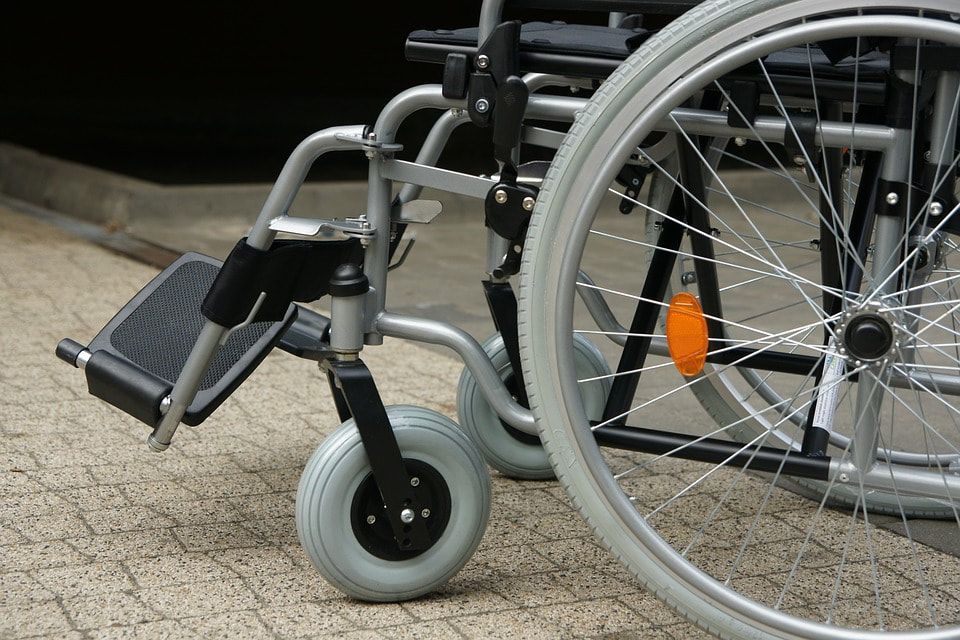
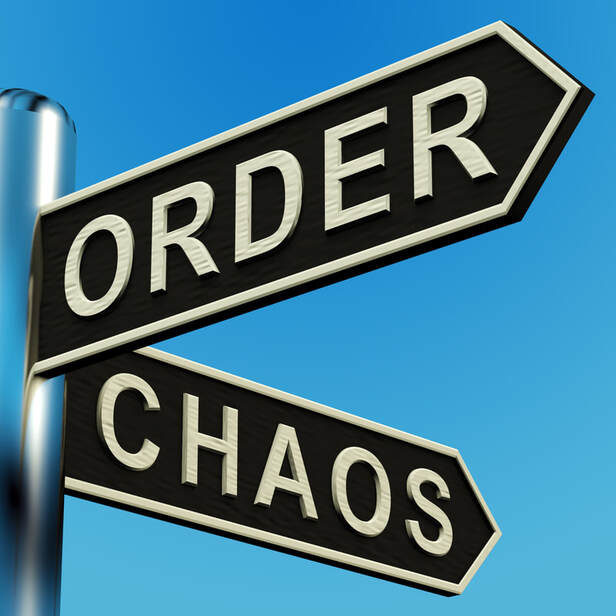

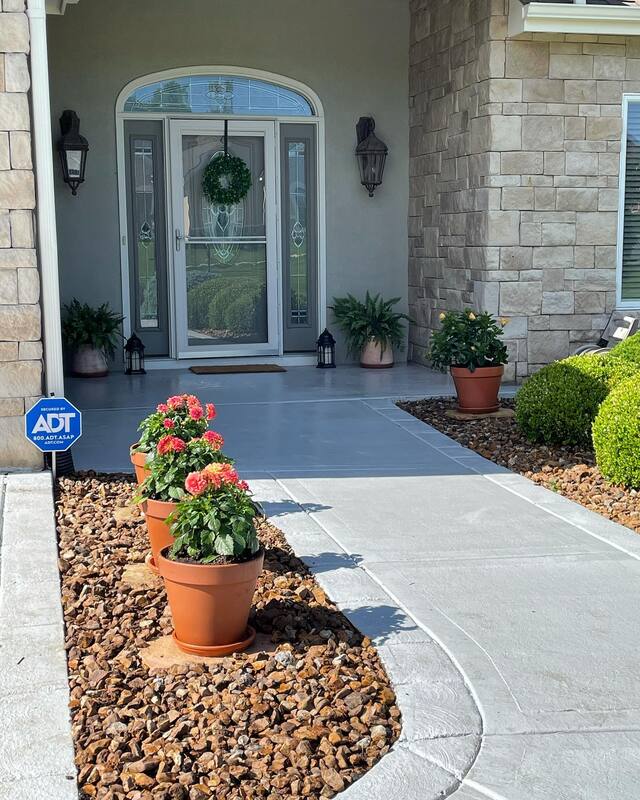
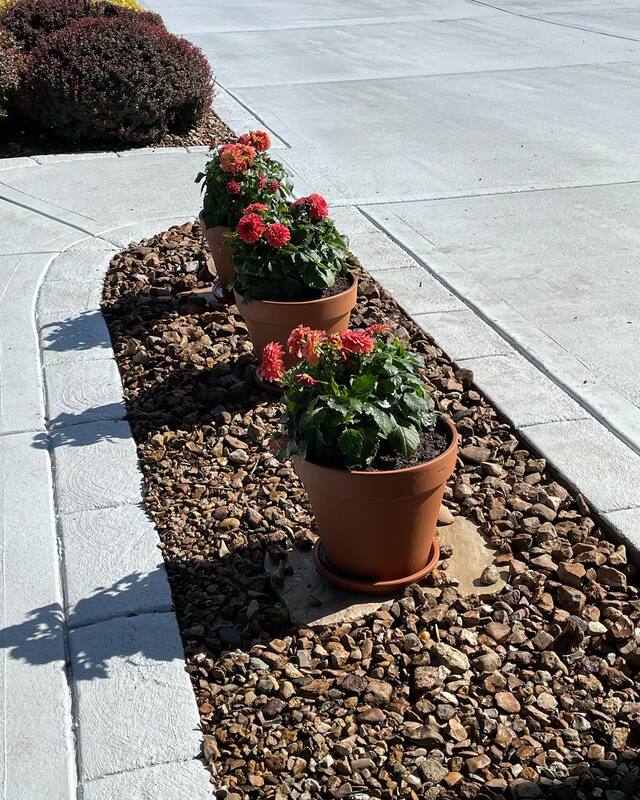

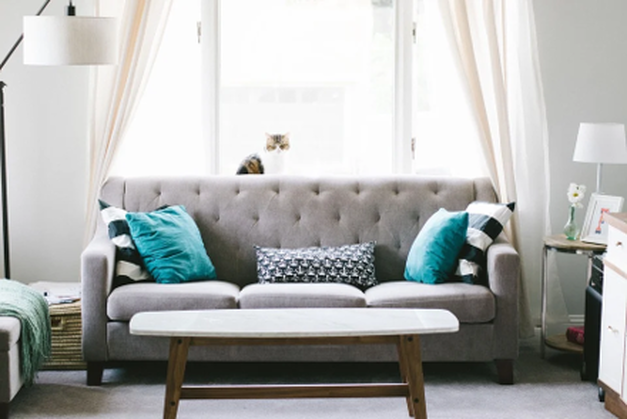
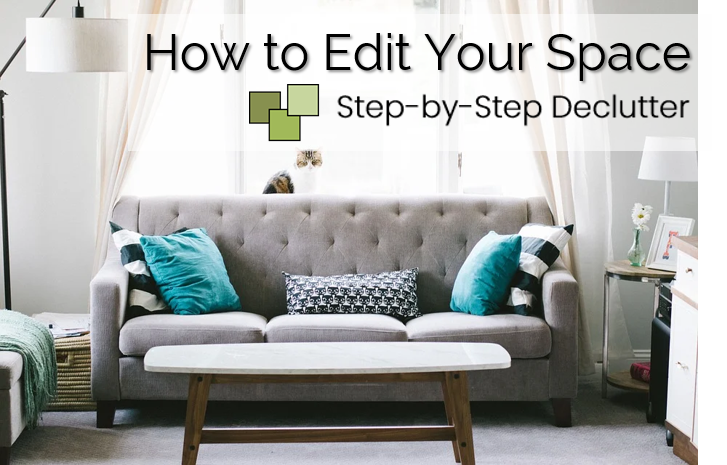

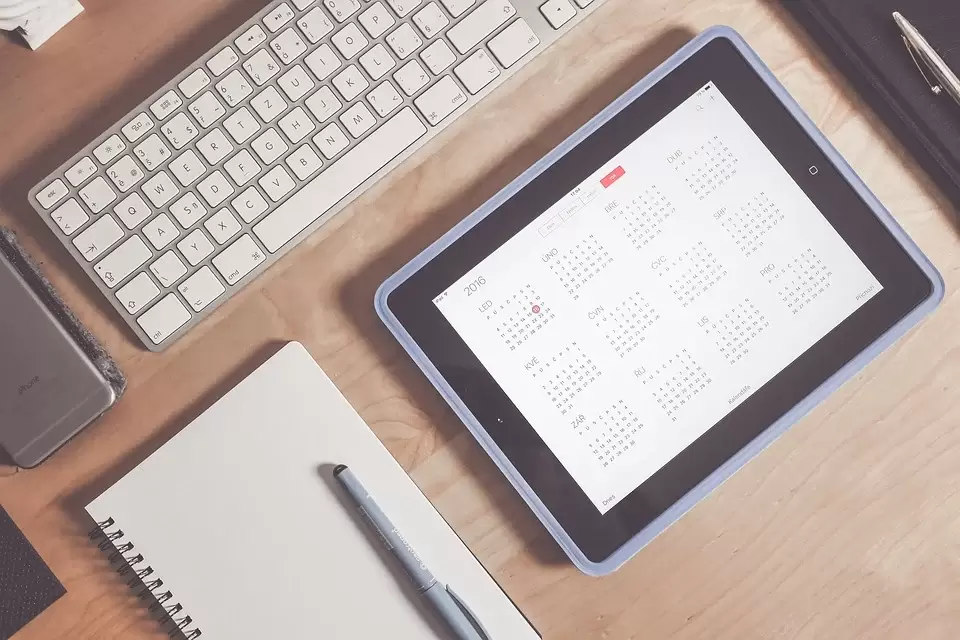
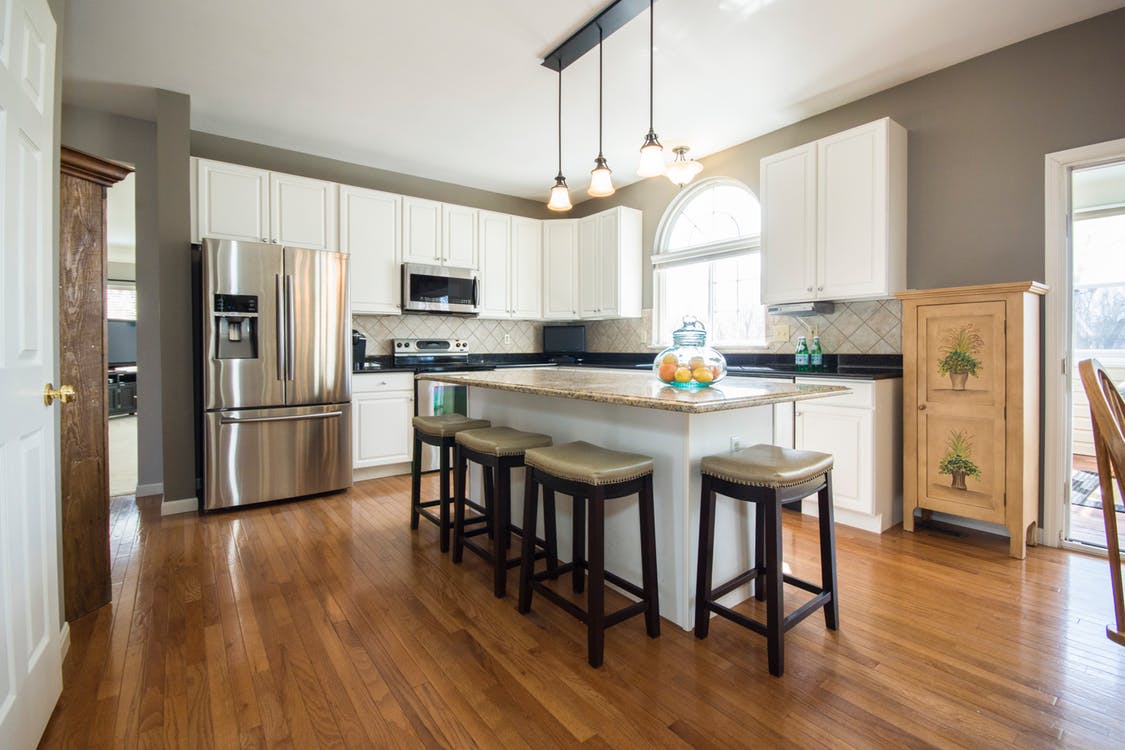
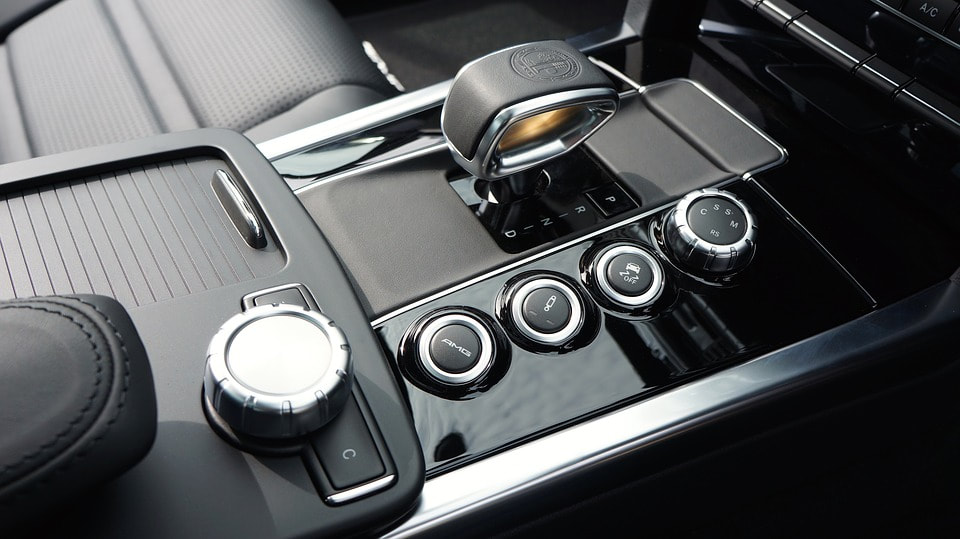
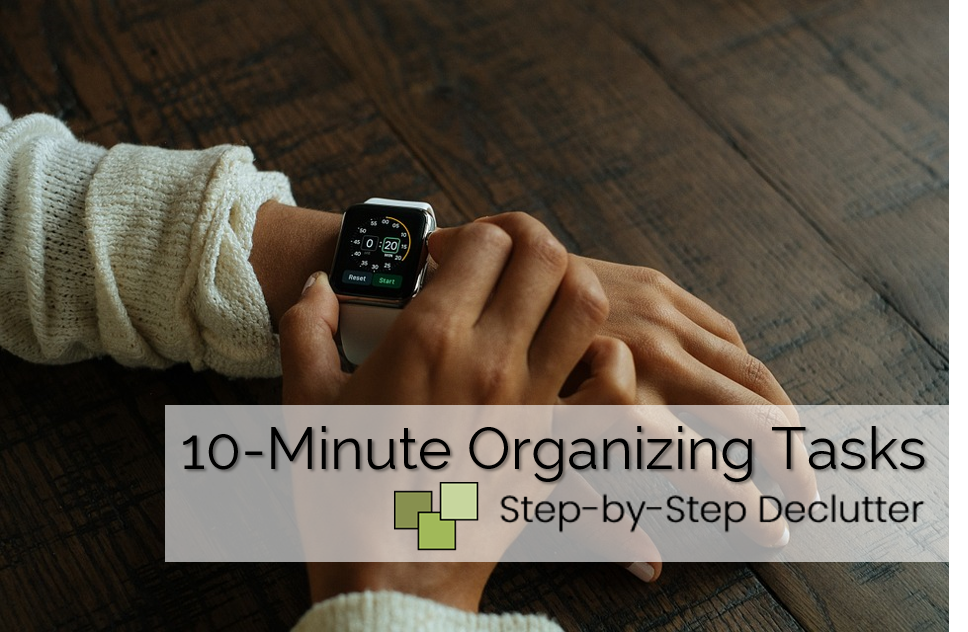

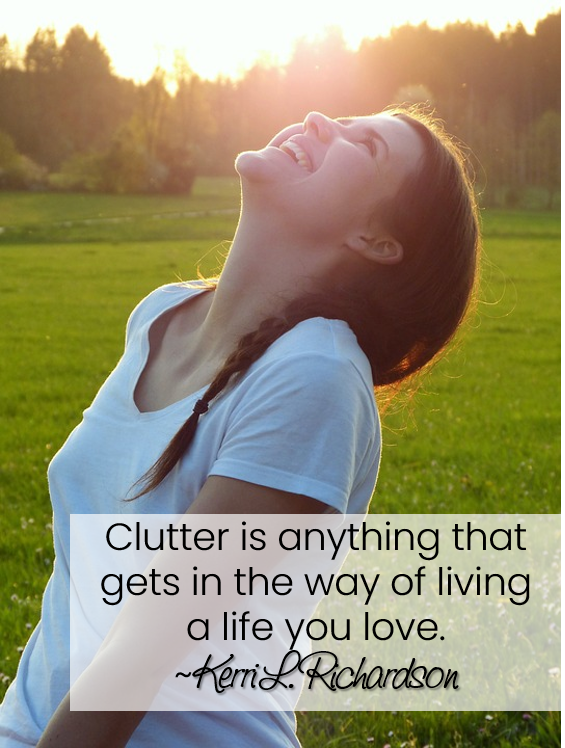
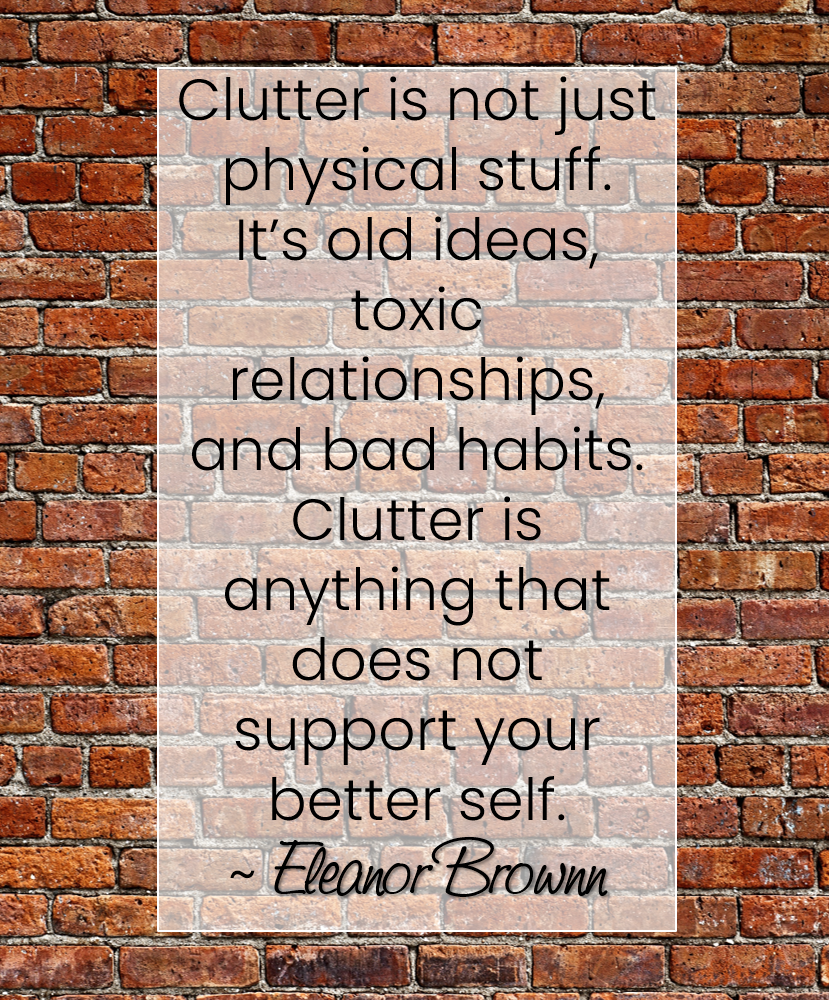




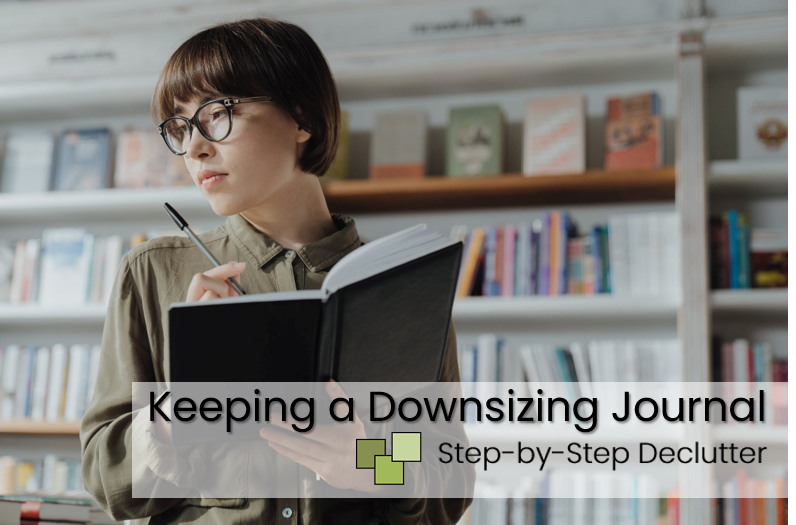
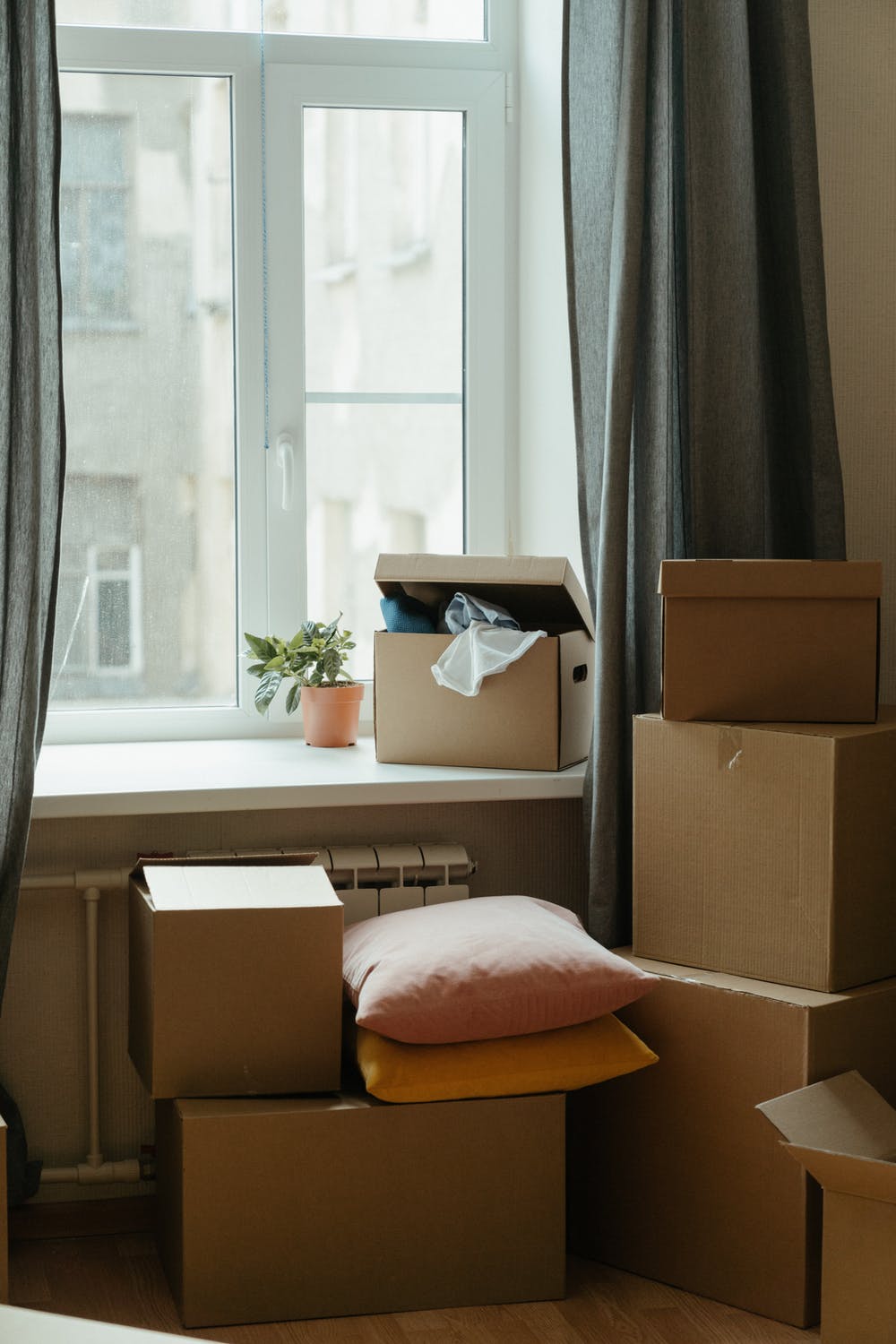

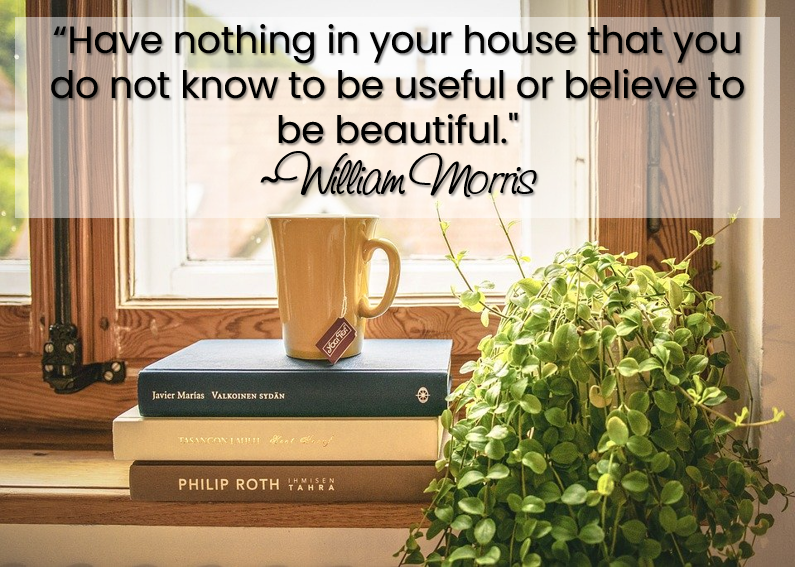

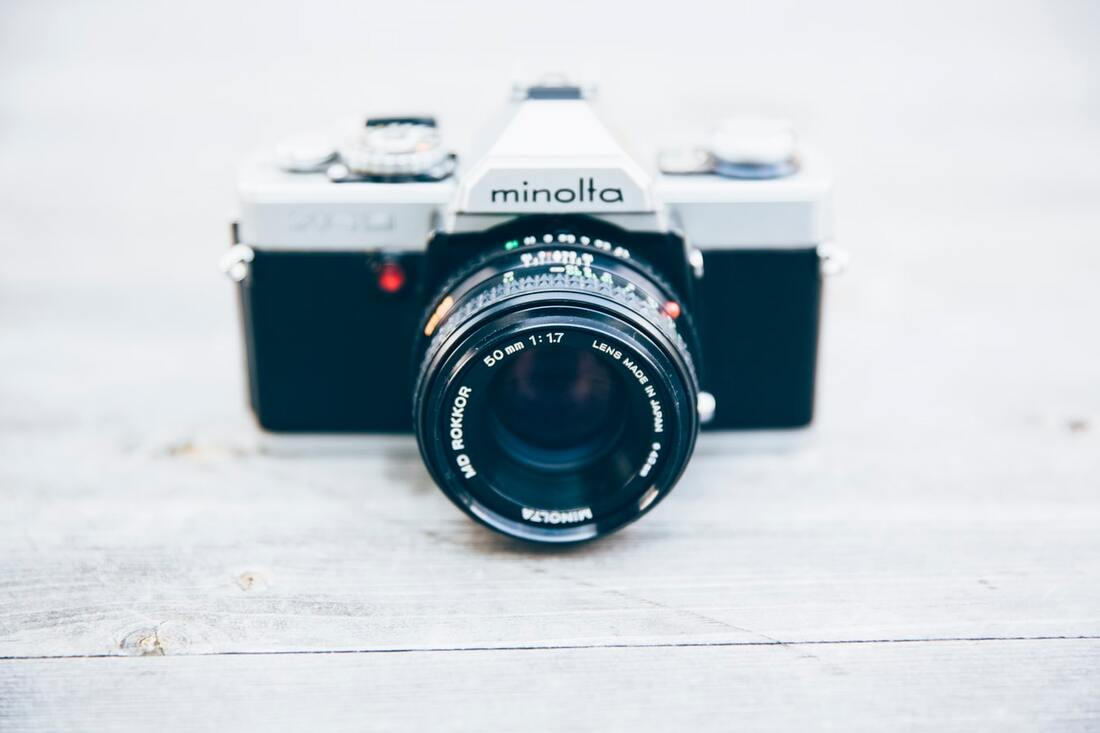
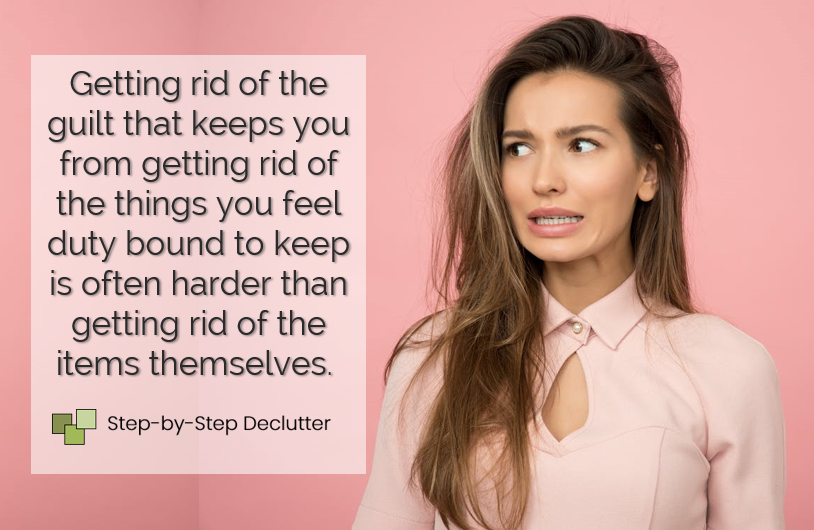
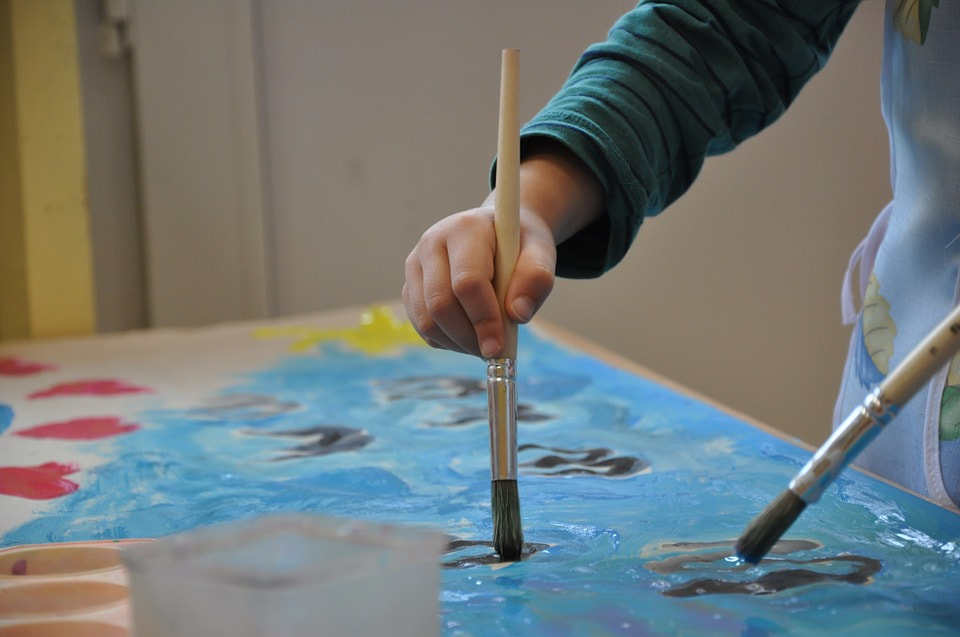

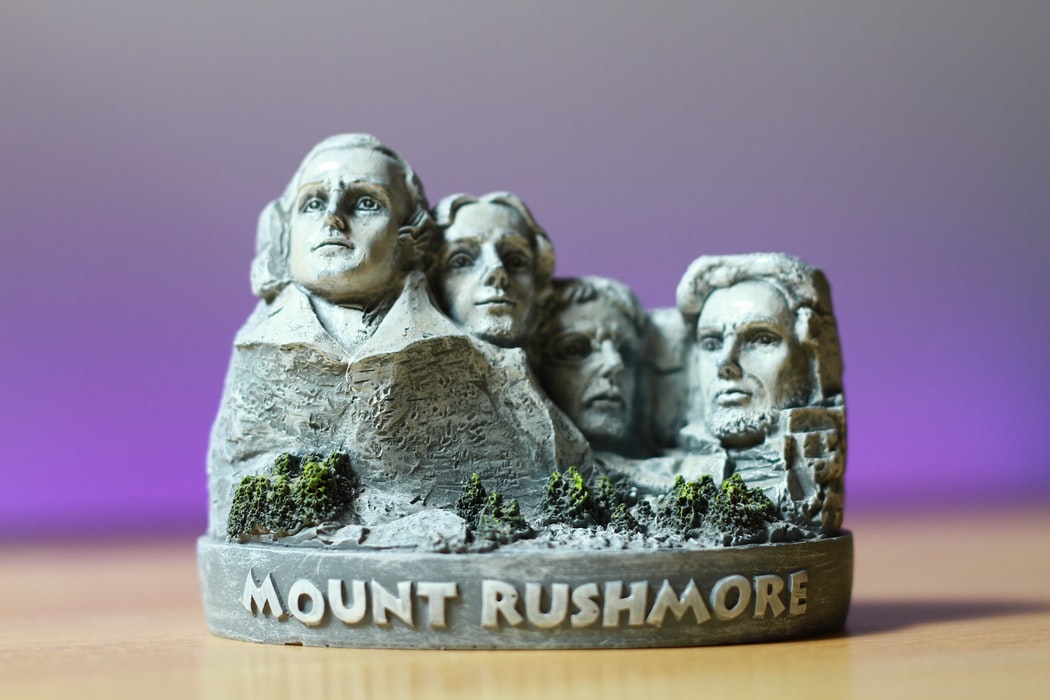


 RSS Feed
RSS Feed